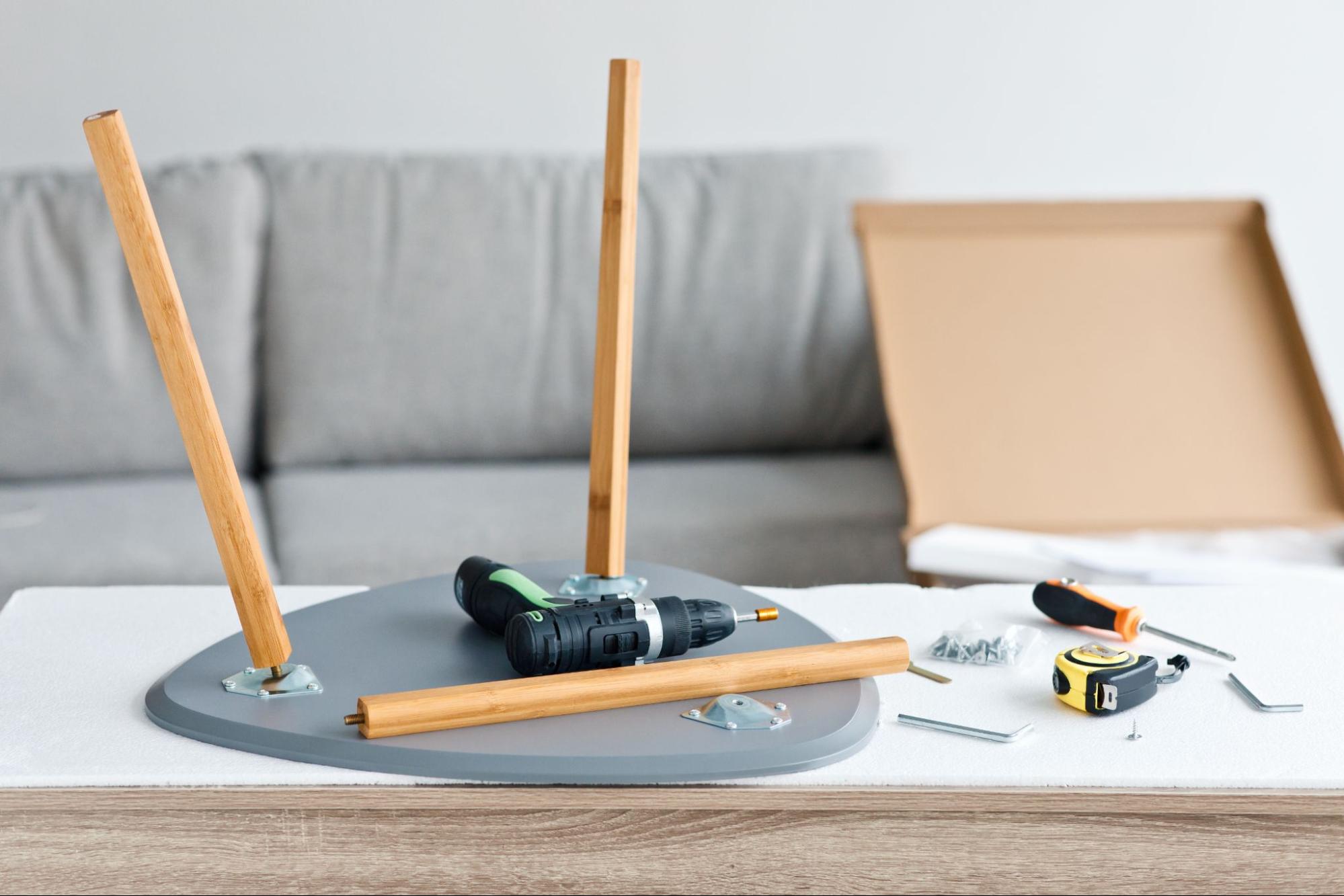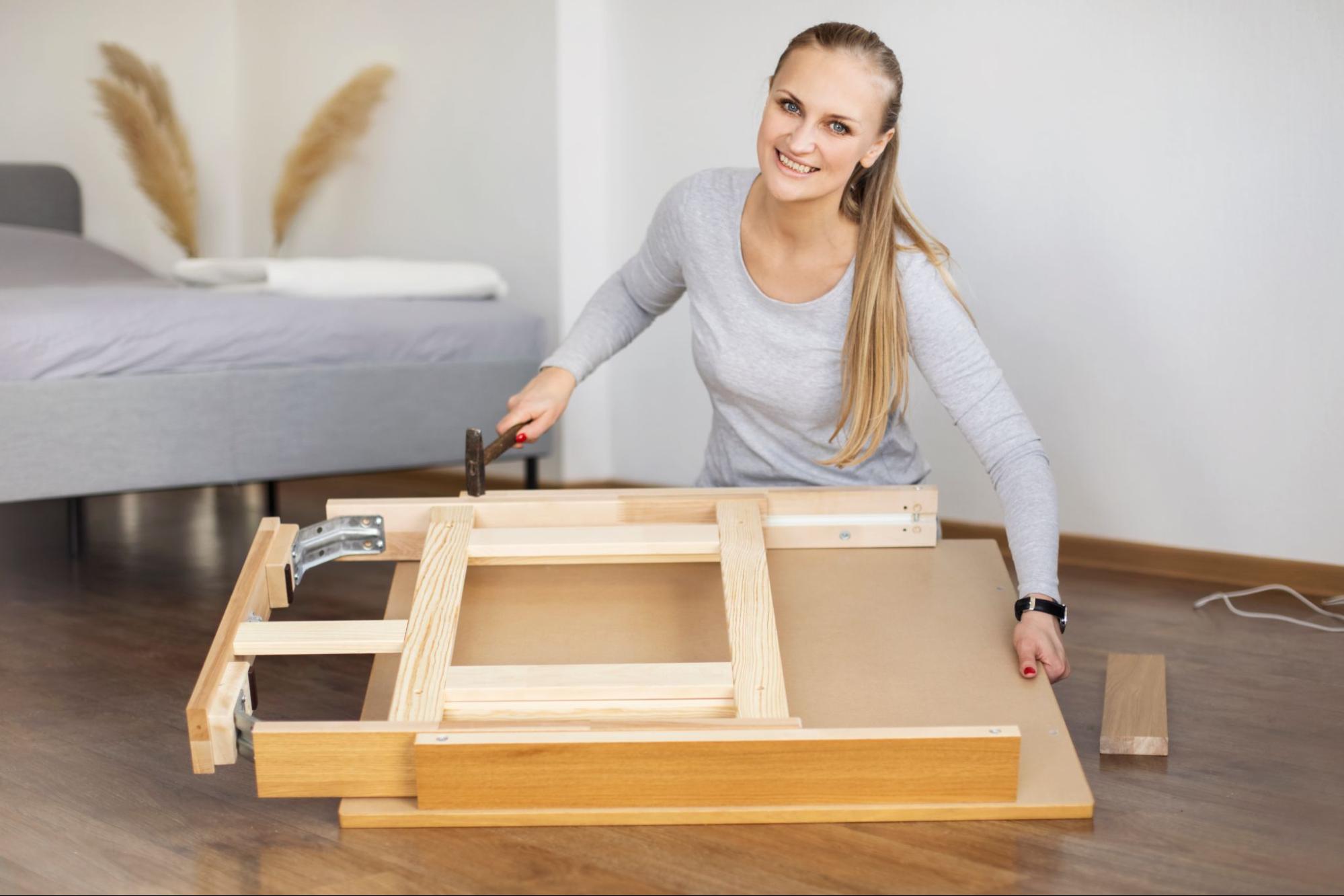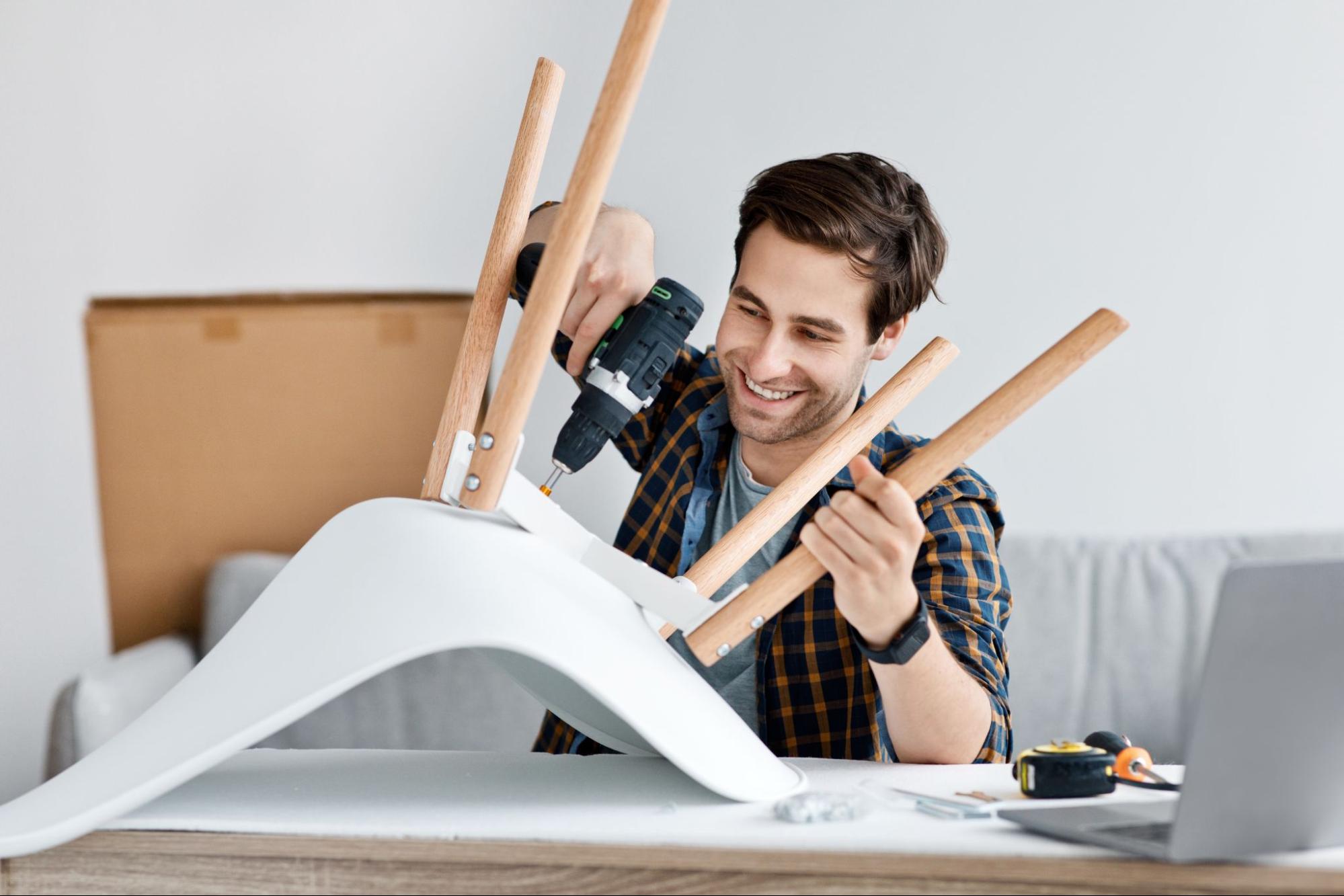
When it comes to assembling furniture, a little preparation can save a lot of frustration. Whether working with flat-pack furniture or more complex pieces, a systematic approach is key. Start by laying out all the pieces and tools you’ll need. This simple step can prevent missing screws and parts, making the process smoother.
Carefully following instructions is critical for successful furniture assembly. Each piece of furniture has instructions to ensure all parts fit together correctly. Skipping or misreading a step can lead to a weak structure or even damage.
Understanding how each piece fits into your interior design can also help. Well-assembled furniture not only functions better but also enhances the look of your home. Paying attention to detail during assembly will produce more durable and attractive furniture.

Setting up your workspace, gathering the necessary tools, thoroughly understanding the instructions, and inventorying the components are crucial to ensuring a smooth furniture assembly project. These preparatory steps will help avoid common pitfalls and ensure a successful assembly.
Choose a clean, flat area with plenty of space to work. A well-lit environment will help you see small components. Lay down a protective covering such as cardboard or an old blanket to prevent scratching the furniture. Keep pets and children away from the work area to avoid distractions and accidents. Prepare a small table or tray to keep your tools and hardware within easy reach.
Before you start, collect all required tools. Standard tools include screwdrivers, an adjustable wrench, a rubber mallet, an Allen key, and a hammer. Make sure you have the correct sizes for each tool. Check if your kit includes specific hardware like screws, nuts, and bolts. If not, contact customer service for any missing pieces. Using the right tools will make the job easier and prevent damage to the furniture.
Carefully read through the assembly instructions before beginning. Many guides feature a step-by-step approach with diagrams. Pay attention to warnings and tips from the manufacturer. Misinterpreting steps or skipping parts can lead to mistakes. If you struggle with any part of the manual, seek help from online videos or forums. Some manufacturers also offer supportive customer service to guide you through tricky steps.
Take out all furniture components and spread them out in your workspace. Organize them by type, size, and step in the instructions. Use small containers or bags for screws, nuts, and bolts to prevent loss. Count all components to ensure you have the correct quantities. That is your chance to check for any missing or damaged parts before you start assembling. Proper organization will save you time and frustration.
With these steps, your preparation will be thorough, ensuring a smoother and more efficient furniture assembly process.

Follow these steps to ensure your furniture assembly is done correctly. This process includes starting the assembly, providing stability and leveling, applying finishing touches and final adjustments, and considering environmental aspects during cleanup.
Begin by organizing all parts and tools needed for the assembly. Lay out each item and thoroughly read the instructions to understand the step-by-step approach. Identify smaller parts like screws and bolts, and place them in containers to avoid losing them.
Clear a large, flat surface to work on. That helps prevent parts from getting misplaced and ensures you have enough room to maneuver. Make sure the space is well-lit so you can see small details. Use packaging materials like cardboard to protect the floor from scratches.
Ensure the stability of your furniture by carefully tightening all screws and bolts during each step of the assembly process. Loose screws can result in wobbly furniture, which can be unsafe. Use a level to properly align all parts, especially for items like drawers or shelves.
If you are working on a soft surface like carpet, consider moving to a harder and more stable area. Uneven surfaces can make the assembly more complicated and affect the stability of your furniture. During this step, periodically check that all components are tight and secure.
Once the main structure is assembled, focus on any finishing touches and final adjustments. Make sure drawers slide smoothly and doors open and close correctly. Adjust hinges and handles as needed to ensure functionality.
Inspect the furniture for any scratches or imperfections. Tighten any loose components one last time before declaring the piece finished. Pay attention to the aesthetics and ensure that everything looks aligned and clean. This step is crucial for both the functionality and appearance of your furniture.
After finishing the assembly, gather all leftover parts and tools. Dispose of or recycle packaging materials like cardboard and plastic responsibly. Organize any remaining screws or bolts into labeled containers for future use.
Consider the environmental impact while cleaning up. Recycle materials wherever possible and dispose of non-recyclable parts properly. This not only helps keep your space tidy but also contributes to environmental conservation. A thorough cleanup ensures that the area is ready for its next use.
Following these steps, you can efficiently execute the entire furniture assembly process, ensuring stability, functionality, and environmental consciousness.
If you need professional help, Kaminskiy Care and Repair can offer assistance. Our services ensure a smooth and efficient furniture assembly process. Contact us today.
Start by clearing the space where you will assemble the furniture. Ensure you have enough room to lay out all components and tools. A hard, flat surface prevents parts from warping or damaging during assembly.
A well-equipped toolkit is crucial. Essential tools include screwdrivers (Flathead and Phillips), an adjustable wrench, and a hammer.
Avoid assembling furniture in the wrong space and not seeking help when needed. Building your project near its final location can prevent issues such as difficulty moving the furniture.
To ensure stability, tighten screws and bolts securely. Use washers to distribute pressure evenly and prevent loosening over time. Double-check that all parts are correctly aligned before finalizing the assembly.